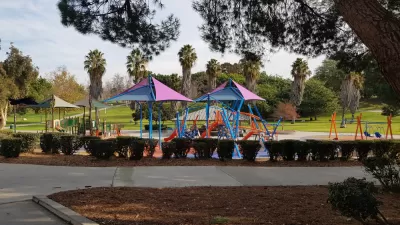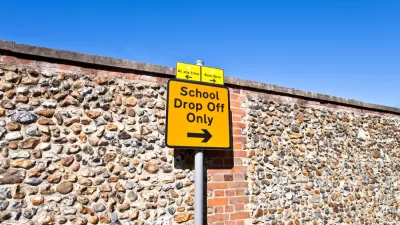Lisa Foderaro explores a program underway in select New York City schools to guide children through the eco-friendly redesign of their own playgrounds.
New York City is taking a new approach to fighting stormwater runoff: Give it to a twelve-year-old for homework. As part of a new initiative spearheaded by the Trust for Public Land, sixth graders at five schools throughout New York – all near overburdened water treatment plants – will give their playgrounds an environmentally-conscious redesign, replacing barren fields of blacktop with storm-friendly gravel and greenery.
"In the process, the children are learning about arcane urban infrastructure and bureaucratese, like 'combined storm-sewer runoff,'" Foderaro writes. "And they are gaining appreciation for the absorbent powers of trees and grass, as well as roof gardens, rain barrels and permeable pavers - bricks that soak up water."
Maddalena Polletta, a representative of the trust, came to Stephen A. Halsey Junior High to show students exactly why the project matters. Armed with a "Sewer in a Suitcase," Polletta poured water and glitter over a miniature model of the city, complete with working storm drains. "Sometimes just a quarter-inch of rain will overflow the system," she explained. "Sewage is released into the bay about 50 times a year. Last year, we had more rain than we've ever had before."
The program fits into broader plans the city has for the future of stormwater management. Over the next 18 years, the city has promised $2.4 billion of public and private funds in "an agreement [to] pay for novel techniques to address its biggest water-quality challenge... The approach is a departure from more traditional methods to control sewage overflow, like storage tanks and tunnels."
FULL STORY: Getting Lessons on Water by Designing a Playground

Maui's Vacation Rental Debate Turns Ugly
Verbal attacks, misinformation campaigns and fistfights plague a high-stakes debate to convert thousands of vacation rentals into long-term housing.

Planetizen Federal Action Tracker
A weekly monitor of how Trump’s orders and actions are impacting planners and planning in America.

San Francisco Suspends Traffic Calming Amidst Record Deaths
Citing “a challenging fiscal landscape,” the city will cease the program on the heels of 42 traffic deaths, including 24 pedestrians.

Defunct Pittsburgh Power Plant to Become Residential Tower
A decommissioned steam heat plant will be redeveloped into almost 100 affordable housing units.

Trump Prompts Restructuring of Transportation Research Board in “Unprecedented Overreach”
The TRB has eliminated more than half of its committees including those focused on climate, equity, and cities.

Amtrak Rolls Out New Orleans to Alabama “Mardi Gras” Train
The new service will operate morning and evening departures between Mobile and New Orleans.
Urban Design for Planners 1: Software Tools
This six-course series explores essential urban design concepts using open source software and equips planners with the tools they need to participate fully in the urban design process.
Planning for Universal Design
Learn the tools for implementing Universal Design in planning regulations.
Heyer Gruel & Associates PA
JM Goldson LLC
Custer County Colorado
City of Camden Redevelopment Agency
City of Astoria
Transportation Research & Education Center (TREC) at Portland State University
Jefferson Parish Government
Camden Redevelopment Agency
City of Claremont





























